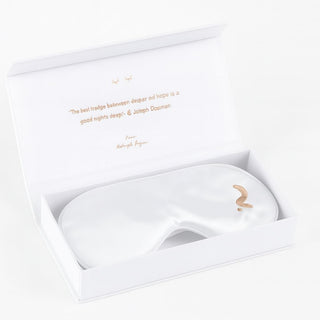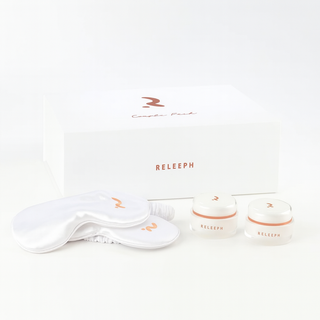How Essential Oils Work

Essential oil pathways
- Topical application – Via the skin
- The respiratory pathway – Via membrane of lungs
- The olfactory pathway – Via the nose
- Ingestion - Via the mouth
Once within the body, the oils instantly take action functioning locally and systematically promoting healing and wellness.
How Aromatherapy works in body flow diagram

The flow diagram above shows how essential oils operate in the body through the four primary routes in a simplified way.
Essential oils can be consumed as a liquid or in the form of vapor. The liquid form can be massaged into the skin or ingested (oral route). The vapor form, on the other hand, must be inhaled.
The oil directly reaches the muscles and tissues on which it is applied via dermal application, and it reaches the joints. Active essential oil molecules travel from muscle and tissues to the bloodstream and other human tissues and organs. The excretory organs then expel them. When oil molecules are absorbed orally, they travel to the intestine and bloodstream. They are then expelled.
When essential oils are inhaled, the oil molecules reach both the lungs and the olfactory bulb in the nose. The molecules go from the lungs to the bloodstream and bodily tissues and organs before being eliminated through the skin, kidneys, and lungs. After reaching the olfactory system through the nose, essential oils impact the brain, resulting in the production of molecules that have a powerful positive mental and emotional impact.
The oil molecules are eliminated by the skin, kidneys, and lungs in this situation. Let's look at each of these pathways to grasp better understanding of how Aromatherapy and essential oils affect the body and the mind.
- Topical application of essential oils
The best technique to apply essential oils is to massage them into the skin. The skin is selectively permeable, allowing water and lipid-based compounds, such as essential and vegetable oils to pass through. Essential oils penetrate the epidermis because of their tiny molecules and bioactivity. They eventually enter the lymphatic and blood circulation systems after passing through the cells and intercellular gaps of the dermis. They are then transported throughout the body, along with blood. Essential oils can permeate the blood-brain barrier because they are lipid-soluble, immediately affecting the brain.
While the blood circulation system absorbs most essential oil molecules, others are taken by sebum and hair shafts, from which they reach the skin's local microcirculation. Essential oils that enter the body through the skin, unlike orally taken drugs, do not have to go through the liver, where they may be significantly altered.
The essential oil molecules are directly transferred to the arterial circulation after topical application and then throughout the body in their natural state. Finally, these molecules enter the venous circulation and are eliminated via the kidney-urine system, the lungs, and the skin.

- The respiratory pathway of essential oils
Small molecules of essential oils, together with air, are carried to the bronchial tubes via inhalation. They increase bronchial secretion, which moistens the air in the area. The moist atmosphere aids oxygen absorption and is beneficial in a pulmonary, throat, or nasal infection. Essential oil molecules permeate the mucosal membranes in the bronchial tubes and affect the local tissues based on their therapeutic characteristics. Inhaling antispasmodic essential oils soothes muscles, reducing excessive bronchial contraction.
When essential oil molecules reach the lungs, they help in the gaseous and nutritional exchange between the blood and lung cells and waste removal from the lungs. The chemicals are then taken into the bloodstream and distributed throughout the body via arterial circulation. Finally, the molecules are returned to the excretory organs via venous circulation, where they are removed via urine, perspiration, and breath.
- The olfactory pathway of essential oils

The effect of Aromatherapy on the brain is a complex and vital topic that has sparked a lot of interest in recent years. Around 20 million nerve cells and olfactory nerve receptors (cilia) are found in the nose. Small molecules from essential oils penetrate through the mucous membrane of the nose and excite nerve receptors when breathed. The olfactory bulbs at the top of the nostrils receive an electrochemical impulse due to this.
The olfactory cells in the nostrils are assumed to be extensions of the first cranial nerves, which carry odorant sensations down the olfactory tract, which branches to multiple locations in the brain. The olfactory system stimulates the limbic system's amygdala and hypothalamus. The hypothalamus affects the central nervous system, the Endocrine System, and the network of information exchange between body cells. The cerebrum (cortex) and the cerebellum and its activities are affected by any impulses in the limbic system. The hypothalamus influences the thalamus. Emotions and memory are linked to the thalamus. Through regulating parameters, the hypothalamus also impacts the pituitary gland.
Essential oils have an olfactory effect on the body. Aromatherapy affects the central nervous system and operates on the brain. Essential oils cause endorphins to be released from the limbic system and the peptide-cell receptor network, resulting in an instant feeling of pleasure or well-being.
- Ingestion pathway of essential oils
When consumed orally, essential oils pass via the stomach and intestine. In addition to its function of absorbing nutrients, the epithelium of the intestine acts as a barrier between the internal and exterior environments, similar to the skin. The olfactory receptor for limonene, Olfr56, is found in big and small intestines. The olfactory receptor Olfr78 was expressed in some, but not all, enteroendocrine cells in the mouse colon, and propionate was discovered to be its ligand. These essential oils may influence energy balance by boosting the microbiota, which will induce the release of propionate, an olfactory receptor ligand. Essential oils may have a role in blood pressure regulation because propionate is also a ligand of Olfr78. Geraniol promotes the release of glucagon-like peptide 1 in mice intestinal tissues and cultured enteroendocrine cells. It also possesses anti-nociceptive properties and plays a role in glutamatergic neurotransmission and transient receptor potential cation channels (TRP channels). In the end, When oil molecules are absorbed orally, they travel to the intestine and bloodstream. They are then expelled.
Essential oils are an easy, adaptable, and very convenient way to improve your health and quality of life. Despite their wide range of therapeutic effects, we will only discuss some key health benefits.
- Stress and anxiety
It has been estimated that 43% of people go for essential oil for the relief of stress and anxiety [1]. Different studies reveal that essential oils gave a very consistent positive result. The aroma of some essential oils have been used in the treatment of anxiety and depression. [2].
- Headaches and migraines
Studies in the early 20th century conducted that the effect of inhaling and applying a peppermint essential oil and ethanol mixture on foreheads relieved headaches and migraines [3]. Recent studies on peppermint, chamomile, and lavender oil also prove that they reduce headaches and migraines after either applying or inhaling the oil [4].
- Sleep and insomnia
There are many Essential oils that also improve sleep patterns in humans, especially inhaling the scents of lavender oil, Frankincense, Rose, Bergamot, Chamomile, Cedarwood essential oils are some of the many that have been proven effective. It has also shown to have a positive effect on the sleep of women after childbirth, as well as patients with heart disease [5] [6].
References:
- De Sousa, D. P., Hocayen, L. N., & Andreatini, R. (2015). A systematic review of the anxiolytic-like effects of essential oils in animal models. 20(10), 18620-18660.
- Lee, Y. L., Wu, Y., Tsang, H. W., & Cheung, W. M. (2011). A systematic review of the anxiolytic effects of aromatherapy in people with anxiety symptoms. The Journal of Alternative Medicine, 17(2), 101-108.
- Göbel, H., Schmidt, & Soyka, D. (1994). Effect of peppermint and eucalyptus oil preparations on neurophysiological and experimental headache parameters. Cephalalgia, 14(3), 228-234.
- Sasannejad, P., Saeedi, M., Gorji, A., Abbasi, M., & Foroughipour, M. (2012). The lavender essential oil in the treatment of migraine headache: a clinical trial. European neurology, 67(5), 288-291.
- Afshar, M. K., Taghizadeh, Z., Bekhradi, R., Montazeri, A., & Mokhtari, P. (2015). Lavender fragrance essential oil and the quality of sleep in postpartum women. Red Crescent Medical Journal, 17(4).
- Lillehei, A. S., & Halcon, L. L. (2014). A review of the effect of inhaled essential oils on sleep. The Journal of Alternative and Complementary Medicine, 20(6), 441-451.



